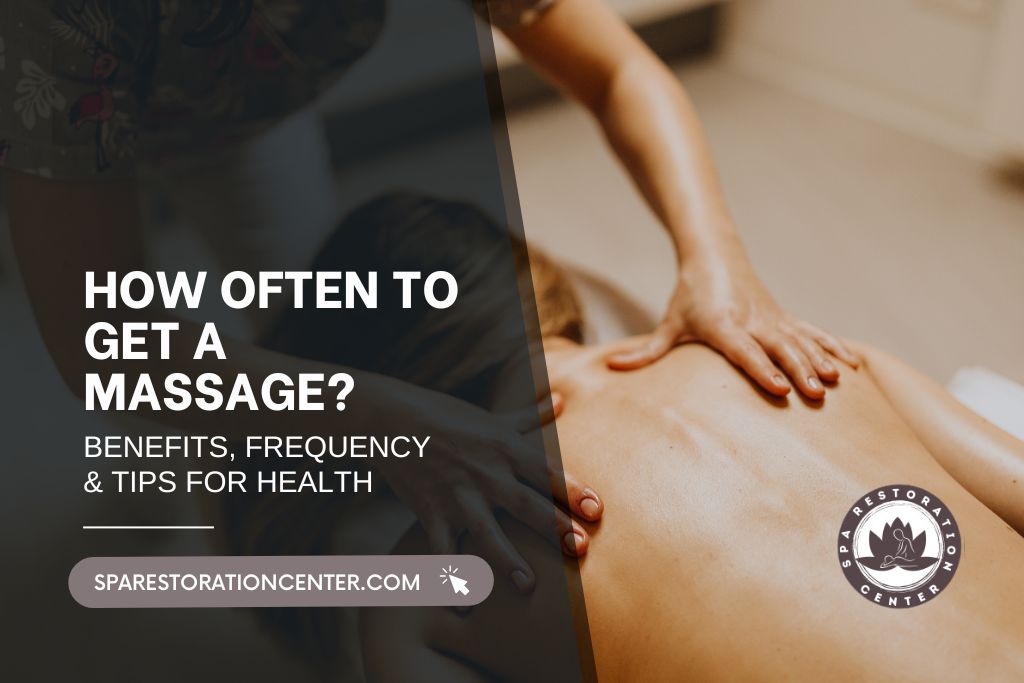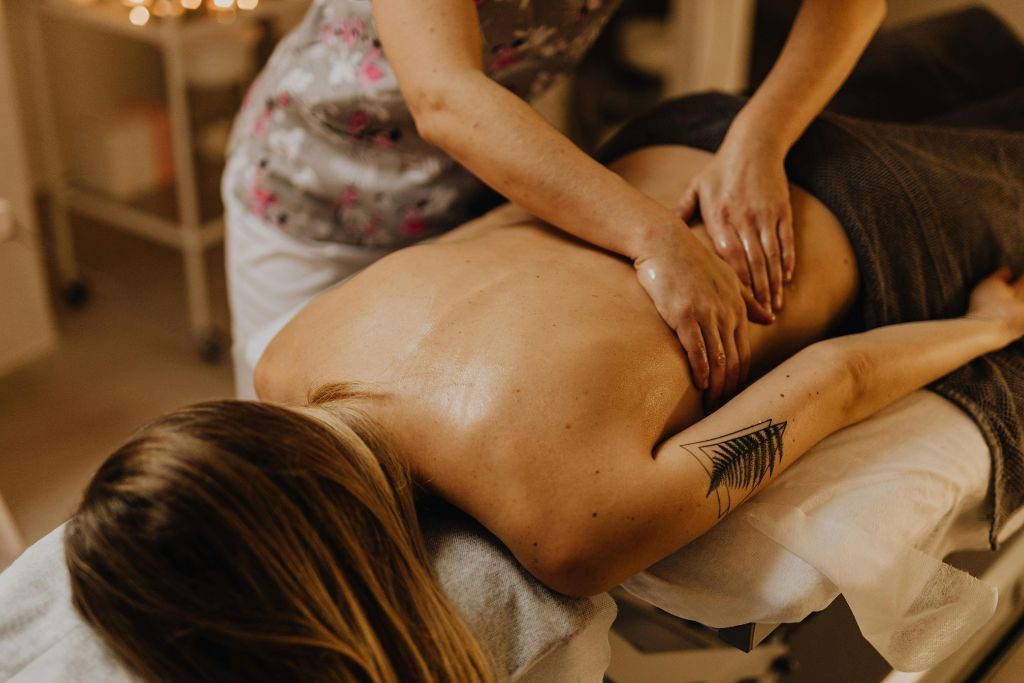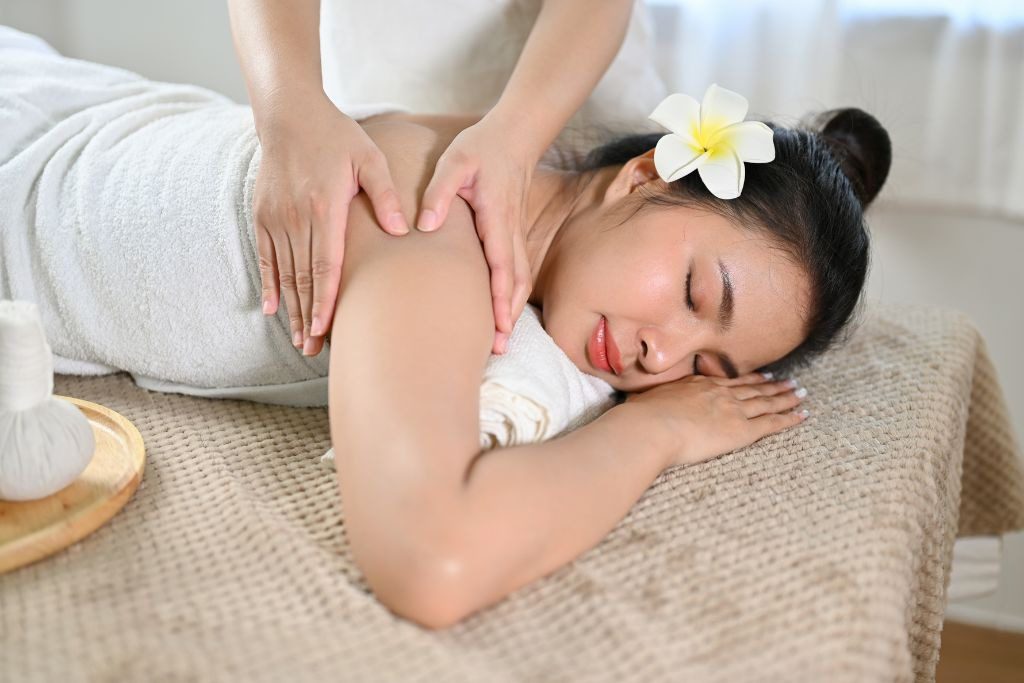
How Often to Get a Massage? Benefits, Frequency & Tips for Health
Massage Frequency is a key factor in achieving better health outcomes. The right schedule supports recovery, reduces stress, and improves mobility. It also helps you maintain consistent results over time.
This guide explains how often to get a massage based on your goals and lifestyle. It clarifies the benefits of regular sessions and the factors that influence frequency. It also outlines how to choose techniques and communicate with your therapist for the best results.
What you will learn:
- The core benefits of massage therapy
- How often to book sessions for different needs
- What affects Massage Frequency in daily life
- How to listen to your body and adjust
- Which techniques fit common goals
- How to find and work with the right therapist
Use these insights to create a clear, sustainable massage routine. A consistent plan will help you feel better, move better, and manage stress with confidence.

What Is Massage Therapy?
Massage therapy is when a trained person uses their hands to press, rub, or move your muscles. It helps with pain, stress, and tightness in the body. Most therapists use gentle or firm pressure to target muscles and soft tissue.
Massage therapy can help your body feel better and your mind feel calm. Many people add regular massages to their health routine.
What Are the Types of Massage?
Many types of massage therapy exist. Each one is made for a special purpose. Some are relaxing, while others help with pain or sports injuries. It is important to know what your body needs.
Swedish Massage
Swedish massage is gentle and relaxing. Therapists use light, smooth strokes and kneading to loosen muscles and help you relax.
- Calms your whole body
- Improves blood flow
- Lessens muscle tightness
- Great for stress
- Good for beginners
A Swedish massage is a good way to relax and get rid of stress. It is gentle but works for most people.
Deep Tissue Massage
Deep tissue massage uses firm pressure to reach deep muscles. It helps with long-lasting pain or muscle knots.
- Helps with chronic pain
- Targets deep muscles
- Uses strong, slow pressure
- Breaks up scar tissue
- Aids healing from injury
Deep tissue massage can be uncomfortable but helps many people with pain. It is common for those who need more than gentle strokes.
Sports Massage
Sports massage is for athletes or people who exercise often. It helps with sore muscles and prevents injuries.
- Boosts athletic performance
- Prevents injuries
- Improves flexibility
- Cuts down muscle pain
- Used before or after big events
Active people can get a lot out of sports massage. It keeps muscles healthy and can help after a tough workout.
Hot Stone Massage
Hot stone massage uses smooth, heated stones on sore spots. The heat relaxes the muscles deeply.
- Uses warm stones
- Improves blood flow
- Lowers stress
- Eases chronic pain
- Soothes muscle stiffness
Hot stone massage combines heat and massage. It is very relaxing and is good for muscle stiffness.
Prenatal Massage
Prenatal massage is for pregnant women. It uses gentle moves to ease pain in the back, legs, or feet.
- Made for pregnancy
- Cuts swelling in limbs
- Lessens back or pelvic pain
- Helps with sleep and stress
- Needs a therapist with special training
This type of massage helps expectant mothers feel better and relax. It is safe when done by a trained therapist.
What Are the Benefits of Regular Massage?
Regular massage has many health benefits. It helps you relax and keeps your body working better. Getting a massage often can:
- Ease sore muscles
- Give pain relief
- Lower stress and anxiety
- Improve sleep
- Make movement easier
- Help you recover faster from injuries
A good massage routine improves your body and your mind.
How Often Should You Get a Massage?
How often you need a massage depends on your health and goals. If you want to relax or lower stress, one massage each month may be enough.
If you have pain or are healing from an injury, you may need a massage every week or two. People who play sports might need more frequent sessions to help their muscles recover.
What Factors Influence Massage Frequency?
Many things decide how often you should get a massage.
- Why you need a massage (pain, stress, relaxation, or injury)
- How much you exercise
- Your budget and free time
- Your stress level
- Advice from a massage therapist
A professional therapist can help you make a plan that fits your needs.
How Can You Listen to Your Body to Set Massage Frequency?
Your body tells you when it needs a massage. You might notice tight muscles, pain, high stress, or trouble sleeping.
If you feel tense again soon after your massage, you might need to go more often. As your body feels better, you can wait longer between sessions. Writing down how you feel after each massage can help you find the best schedule.
What Are the Physical Benefits of Regular Massage?
Consistent massage makes your body healthier. The benefits add up each time you go.
- Muscles feel less sore
- You can move more easily
- Blood flows better
- Blood pressure may go down
- Your body can fight sickness better
- Injuries heal faster
Physical health improves with regular care.
How Does Massage Support Mental and Emotional Wellness?
Massage calms your body and mind. It lowers stress and helps you sleep better. This improves focus and mood during the week and makes busy days feel easier.
It also boosts feel-good chemicals that support a positive outlook. When you get a massage regularly, it helps you handle daily stress, recover faster, and feel more balanced over time.
How Does Massage Help with Chronic Pain Management?
Massage loosens tight muscles and reduces knots. It increases blood flow to sore areas. This can ease stiffness and help you move better.
It is a drug-free option that works with other care. Regular sessions can break pain cycles and calm your nervous system.
What Massage Techniques Are Best for Your Needs?
Choose Swedish or hot stone massage for relaxation. These styles feel gentle and smooth. They reduce stress and help you reset. They also support better sleep and a calmer mood.
Pick deep tissue for tight spots or pain.
Try sports massage if you are active or training. Tell your therapist your goals so they can match technique and pressure. Share any sore areas so they can focus where you need it most.
How Do You Find the Right Massage Therapist?
Look for a licensed therapist with the right experience. Check reviews and ask for referrals. Choose someone who has helped people with needs like yours. Confirm they offer the techniques you want. Make sure their location, hours, and pricing fit your schedule and budget.
Notice how well they listen. A good therapist asks clear questions and explains their plan. They discuss pressure, goals, and any limits. They outline what to expect during and after the session. They tailor each session to you.
How Should You Communicate with Your Therapist?
Before your session, share your health history and goals. Mention any recent injuries, surgeries, or medical conditions. Be clear about pressure preferences, sensitive areas, and spots to avoid. Explain what a good result looks like for you less pain, better sleep, more mobility, or deep relaxation.
During the massage, speak up right away if something feels too intense or not effective. Ask for more or less pressure, a slower pace, or extra time on a problem area. Share preferences for temperature, music, or bolster support. Real-time feedback helps your therapist adjust so you feel safe, supported, and leave with better results.
Book your session at Spa Restoration today and start your optimal massage routine.
Book your session at Spa Restoration today and start your optimal massage routine.
Ready to care for your health?
At Spa Restoration in Arlington, VA, we tailor each session to your needs. We can help with relaxation, pain relief, or recovery.Set a schedule that fits your life. Book your appointment today. We will create a plan that helps you feel your best.

Frequently Asked Questions
How long should a typical massage session last for best results?
Most people choose a 60-minute session for relaxation. If you have more pain or need extra focus, try 75 or 90 minutes.
Are there any contraindications or times when you should avoid massage?
Yes. Avoid massage if you have a fever, a skin infection, or certain medical issues like blood clots. Always check with a doctor if you are unsure.
What should I do before and after a massage to maximize benefits?
Drink water before and after your massage. Eat only a light meal before. Stretch gently and rest after the session.
How much pressure should I request if I’m new to massage therapy?
Start with light or medium pressure. Let your therapist know what feels good. You can always adjust during your session.
Can massage help with headaches or migraines, and which techniques work best?
Yes. Massage can help headaches, especially those caused by tense muscles. Swedish and trigger point therapy often work well.



Leave a comment